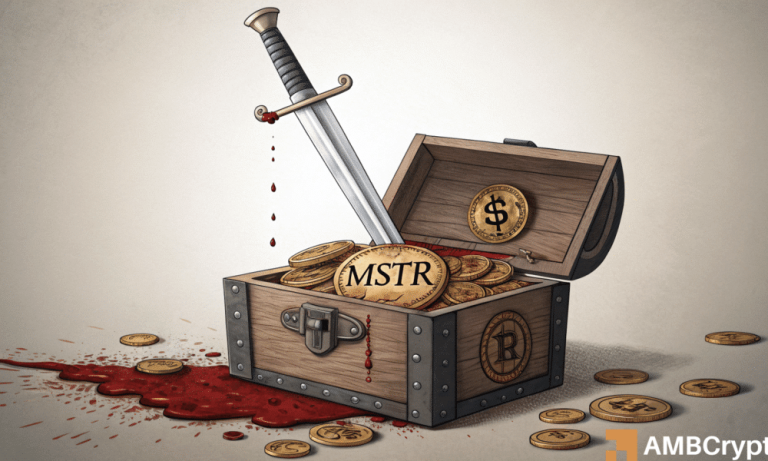
Cardano’s ADA has found itself in the spotlight once again, with bearish trends raising concerns among crypto investors. But despite the dramatic downturn, does ADA’s price really risk dropping to zero, or is this simply a macro-driven correction? Let’s break it all down with a detailed analysis of market trends, technical indicators, and potential future scenarios.
Cardano’s Downtrend: Unpacking the Market Decline
In recent weeks, ADA’s price has slipped into a heavy downtrend, alarming investors. However, examining the daily chart closely reveals this is not an imminent collapse. The Heikin-Ashi candles display consistent downward momentum, but the trend is structured rather than chaotic – a key distinction that separates corrections from complete breakdowns.
Another important observation lies in ADA’s interaction with Bollinger Bands. The coin is riding the lower band, which indicates strong selling pressure. However, such trends often signal an eventual snapback in price. Cryptocurrencies rarely hug the lower Bollinger Band indefinitely, as market dynamics inevitably shift.
Macroeconomic Forces Shaping ADA Prices
The Federal Reserve’s current stance has been a pivotal factor influencing the broader cryptocurrency market. Rising wages combined with climbing unemployment rates and inconsistent economic data due to the prior government shutdown have created uncertainty. This state of flux affects volatile altcoins like ADA, where risk-averse investors pull out amidst macroeconomic indecision.
It’s critical to note that Cardano’s price fluctuations are not driven by any failure of its network. Cardano remains robust, widely supported, and heavily staked. The selling pressure results from external economic variables, not intrinsic flaws in the blockchain or its utility.
Technical Levels to Watch for ADA
Technical indicators suggest that ADA’s recent pullback isn’t a flashpoint for collapse. Panic selling in October drove prices lower temporarily, but buyers stepped in, mitigating further damage. Key support remains at $0.41–$0.42, while retracement could extend to $0.33–$0.35 if bearish sentiment persists. However, these are normal correction patterns and do not imply long-term extinction.
Achieving structural resilience, ADA hasn’t formed significant new lows, suggesting strong foundational support. If the Federal Reserve sends dovish signals soon, ADA might rally back to the middle Bollinger band range of $0.50–$0.55.
What Does the Future Hold for ADA?
While further price reductions in the short term cannot be ruled out, ADA’s current trajectory does not align with a zero-bound crash. Altcoins typically hit zero due to network collapses, disinterested developers, withdrawn stakers, and de-listings by exchanges. Cardano, conversely, remains an active project with substantial community backing and liquidity.
For investors, this is a time to monitor macroeconomic trends carefully and stay informed about updates from the Federal Reserve, as these external influences have played a significant role in shaping recent market movements. If investors regain confidence, ADA could recover a portion of its losses.
Investing in the Crypto Market
For holders of ADA or those exploring investment opportunities, staying updated with technical analysis and macroeconomic shifts is crucial. Additionally, leveraging tools like a reliable cryptocurrency wallet can help manage your portfolio during market volatility. One noteworthy product is the Ledger Nano X, a highly secure hardware wallet that protects your digital assets. You can check it out here.
In conclusion, Cardano’s recent struggles stem from broader economic uncertainty rather than fundamental weaknesses in its ecosystem. While current bearish trends persist, this is not indicative of a death spiral for ADA. Instead, the crypto is navigating macro-driven turbulence, positioning itself for its next price movement.



